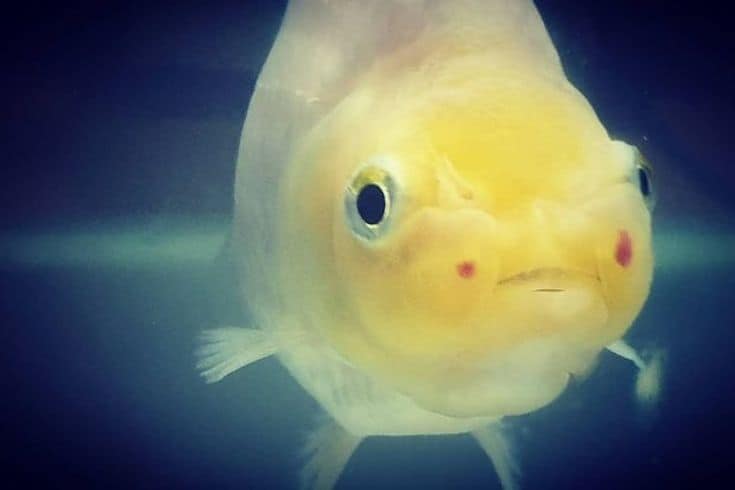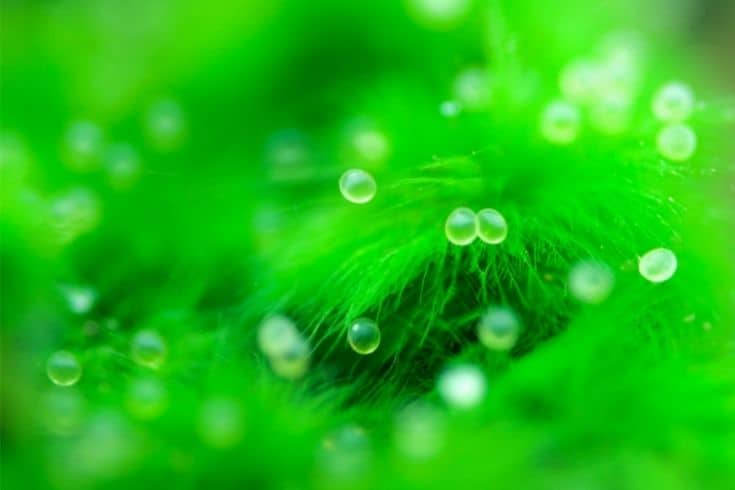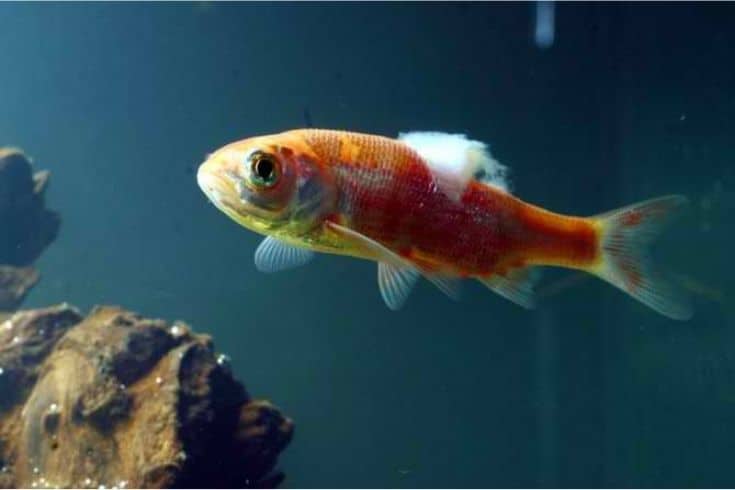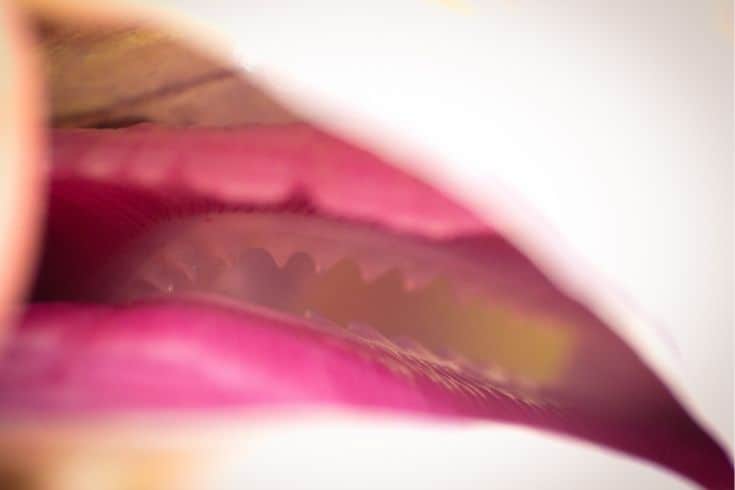“Fungus” is often used as a catchall term for any kind of disease that leaves a white fuzz on goldfish. In reality, there are many different types of fungus, each with its own set of symptoms and treatment options.
This article will explore the most common types of goldfish fungus, what causes them, and how to treat them effectively.
Types of Goldfish Fungus
There are four main types of illnesses related to goldfish fungus – red spot disease, egg fungus, fungal skin disease, and fin rot. We will discuss each in turn.
Red Spot Disease

Cause:
Also known as an epizootic ulcerative syndrome, the Aphanomyces invadans fungus causes red spot disease. It is often seen in goldfish that are already stressed or have weak immune systems, as the fungus can take advantage of these conditions to cause illness.
In addition, poor water quality can also lead to red spot disease, as the fungus thrives in dirty, stagnant water. Fish also tend to be more stressed in these kinds of environments, which can lead to a further weakening of the immune system.
Symptoms:
The most obvious symptom of red spot disease is the presence of red or white ulcers on the fish’s body. These ulcers can range in size from a few millimeters to several centimeters, and a red halo often surrounds them. The ulcers can occur anywhere on the fish’s body, but they are most commonly found on the head, fins, and tail.
As the disease progresses, the ulcers will begin to eat away at the flesh of the fish, causing open wounds. The fish may also develop fin and tail rot, as the ulcers can damage the fins and tail. In severe cases, the ulcers can cause the death of the fish.
Treatment and Prevention:
There is no known cure for red spot disease, so the focus of treatment is on preventing the spread of the disease and alleviating the symptoms.
To prevent the spread of the disease, it is important to maintain good water quality and to quarantine any fish that show signs of the disease. It is also important to disinfect any equipment that has come into contact with the fish.
To alleviate the symptoms of the disease, antibiotics can be used to treat secondary bacterial infections. In addition, anti-fungal medications can be used to treat ulcers.
Egg Fungus

Cause
We often think of fungal infections as types of diseases that affect adult fish, but this is not always the case. In fact, one of the most common types of fungal infections in goldfish is egg fungus, which affects the eggs of the fish.
Egg fungus is caused by several different types of fungi, including Saprolegnia and Achlya. These fungi thrive in warm, stagnant water, and they can quickly infect a batch of eggs. Typically, this happens when there are dead embryos or unfertilized eggs in the batch, as these provide a food source for the fungi.
Healthy eggs have a natural level of immunity and protection against fungi. Still, when a neighboring egg dies, this can provide an opening for the fungi to take hold, increase, and infect the entire batch.
Symptoms:
The most obvious symptom of egg fungus is the presence of fuzzy white or gray growth on the eggs. These typically appear within a day or two after the eggs are laid, and they can spread quickly. In addition to the fuzzy growth, the eggs may also develop black spots.
As the fungus grows, it will begin to eat away at the egg, causing it to shrink. Though the fungus starts by attacking dead or unhealthy eggs, it can quickly spread to healthy eggs if the conditions are right.
Treatment and Prevention
This is an aggressive fungus that can quickly kill a batch of eggs. Unfortunately, there is no natural treatment for egg fungus, so damage control is the best thing you can do. The first step is to remove any eggs that are covered in fungus. This will help to prevent the spread of the disease. Eggs that are already covered in white fuzz should be removed so that they don’t infect the healthy eggs.
Once all of the infected eggs have been removed, the next step is to increase the aeration in the tank. This will help to improve the water quality and keep the eggs from getting too warm, which can lead to further infections. A fry tank should also be created as soon as your goldfish gets pregnant, which will allow you to keep a closer eye on egg and fry development.
Egg fungus is a serious disease that can quickly kill a batch of eggs. However, by taking some simple precautions, you can help prevent the disease’s spread.
Skin Fungal Disease

Cause:
Sometimes known as cotton wool disease or cotton fin fungus, skin fungal disease is a common condition that can affect goldfish. This disease is caused by several different types of fungi, including Saprolegnia and Achlya. These fungi thrive in warm, stagnant water, and they can quickly infect the skin of a fish.
These fungal infections typically occur when the fish are stressed, which can happen for a variety of reasons. Poor water quality, overcrowding, and a lack of oxygen in the water can all lead to stress, which makes the fish more susceptible to disease. In addition, physical injuries and wounds can also provide an opening for the fungi to take hold.
Symptoms:
The most obvious symptom of fungal skin disease is the presence of white fungus or any other traces of fungus on the fish’s skin. These typically appear within a day or two after the fish are infected, and they can spread quickly. In addition to the fungus, the fish may also develop black spots on their skin.
As the fungus grows, it will begin to eat away at the fish’s skin. This can cause the skin to become ulcerated and open, leading to secondary bacterial infections. In severe cases, the fungus can eat away at the fish’s fins, causing them to rot.
Treatment and Prevention
Skin fungal disease is a serious condition that can quickly kill a fish. However, it is relatively easy to treat if caught early. The first step is to separate uninfected fish from those that are infected. Place affected fish in sickbay during treatment, and give them a mild salt bath using un-iodized salt. The ideal salt content for a salt bath is 2-3 tablespoons per gallon of water.
After treating the fish, it is important to take steps to prevent the spread of the disease. The first is to make sure that tank maintenance is up to par. This includes regular water changes and vacuuming the gravel to remove any debris.
In addition, it is important to keep aggressive fish out of the tank, as they can cause physical injuries that can lead to skin fungus. The last thing you need is your nonaggressive fish to be constantly harassed and stressed out. Move the aggressor fish to another tank, or consider rehoming them altogether. For a list of appropriate tankmates for your goldfish, check out this article!
Branchiomycosis (Gill Rot)

Cause
Last but not least, we have gill rot, a deadly disease that can affect goldfish. This disease is caused by Branchiomyces sanguins and Branchiomyces demigrans, which are kinds of fungi that live in stagnant water. These fungi thrive in water that is low in oxygen, and they can quickly infect the gills of a fish.
Gill rot is highly contagious, and it can quickly spread from fish to fish. In addition, this disease can also be passed on from one generation of fish to the next. This is because the spores of the fungus can survive in the water for long periods of time, and they can infect new fish when they hatch.
Symptoms
Gill rot causes a reddish and inflamed appearance in the fish’s gills. In addition, the gills may also appear to be swollen and have a film on them. The gills will begin to degenerate and break down as the disease progresses. This can lead to difficulty breathing, and the fish may gasp for air at the surface of the water.
The gills may disintegrate completely in severe cases, and the fish will suffocate and die.
Treatment and Prevention
Unfortunately, gill rot is a very difficult disease to treat. This is by the time the symptoms are noticeable, the disease has usually progressed too far. However, potassium permanganate can be used as a last-ditch effort to try and save the fish.
The best way to prevent gill rot is to avoid overstocking your tank. Allocate at least 10 gallons of water per goldfish to allow plenty of room to swim. In addition, make sure to do regular water changes and vacuum the gravel to remove any debris.
Keeping your fish healthier will also make them less susceptible to disease. Gill rot is a serious disease that can quickly kill your fish, so it is important to take steps to prevent it.
Conclusion
There are many different types of goldfish fungus diseases, and each one requires its own unique treatment. However, the best way to prevent these diseases is to maintain a clean and healthy environment for your fish. Stressed fish are more likely to get sick, so keeping them happy and stress-free is important. You can help keep your goldfish healthy for years to come by following these tips!
We hope you enjoyed this article on goldfish fungus. If you have any questions or comments, please feel free to leave them below!
